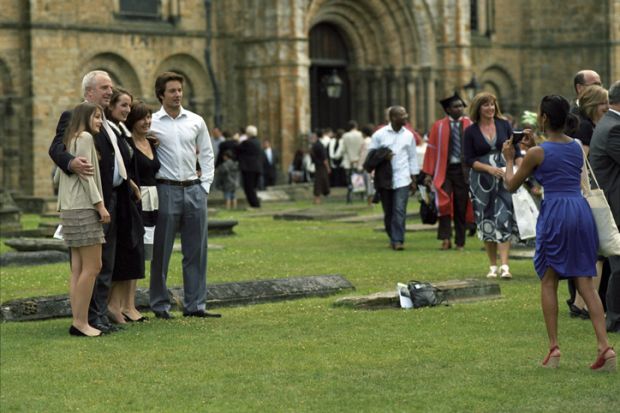New undergraduate recruitment fell by up to a quarter at some of the UK’s most prestigious universities this autumn, data show.
The “unprecedented” drop in the number of undergraduates accepted into Russell Group institutions was the largest on record, according to experts, and came after three years of rapid expansion among research-intensive universities on the back of the use of predicted grades during the Covid-19 pandemic.
Analysis by Times Higher Education of newly released data from the admissions service Ucas shows that 140,735 students started courses at Russell Group universities in 2022 – a quarter of the total undergraduate intake.
But the Russell Group intake was 10 per cent down from the peak of 156,990 applicants accepted in 2021 – the largest fall since comparable records began in 2006.
At the University of Exeter, the number of accepted applicants dropped by 26 per cent, to 6,060, in 2022 – the institution’s smallest recruitment round for six years.
Similarly large declines in enrolment were recorded at Durham University (down 24 per cent), the University of Edinburgh (21 per cent) and the University of Bristol (20 per cent).
Just three of the 24-strong Russell Group increased their intake: the London School of Economics, Newcastle University and the University of Sheffield.
By comparison, higher education institutions outside the Russell Group increased their intake by 4 per cent year-on-year.
Post-92 universities accepted about 277,000 applicants in 2022 – a 5 per cent rise on the number in 2021, and the highest figure since records began.
Mark Corver, co-founder of DataHE and former director of analysis and research at Ucas, said there had been an “unprecedented” year-on-year reduction in the intake of UK 18-year-olds to the Russell Group.
“The majority of [this was] an unwinding of the exceptional conditions of previous years, but not all of it,” said Dr Corver.
He said the “grinding pressure of the economics of UK versus overseas students, which of course may get worse in the future” – referring to the shrinking value of domestic tuition fees during an era of high inflation – might also explain reductions in recruitment.
“If this is reflecting the increasingly terrible economics of teaching UK 18-year-olds, then it is unlikely that these universities, readily popular with higher-fee paying international students, will be seeking to restore their share of the ‘UK 18’ market any time soon,” Dr Corver said.




